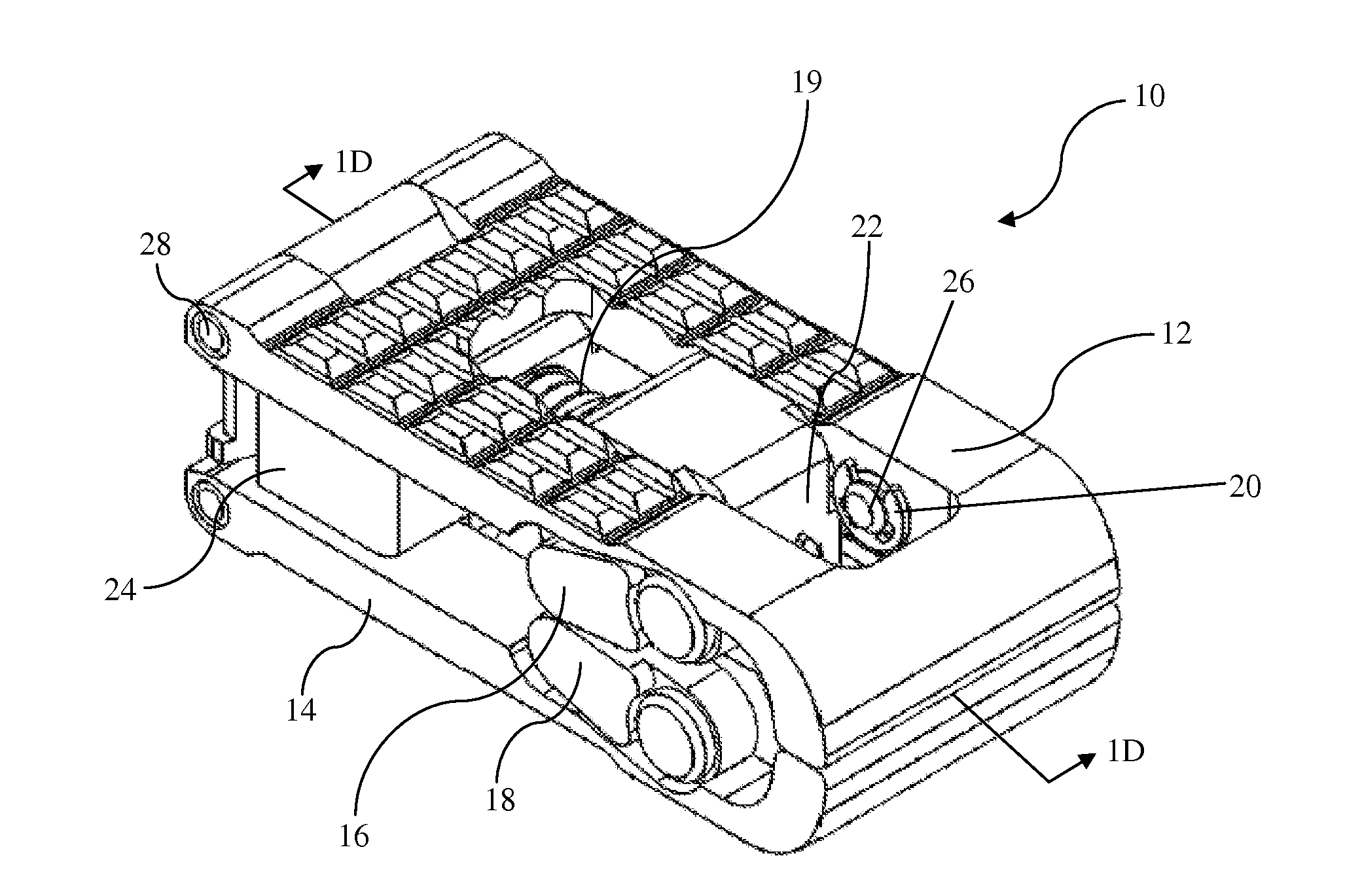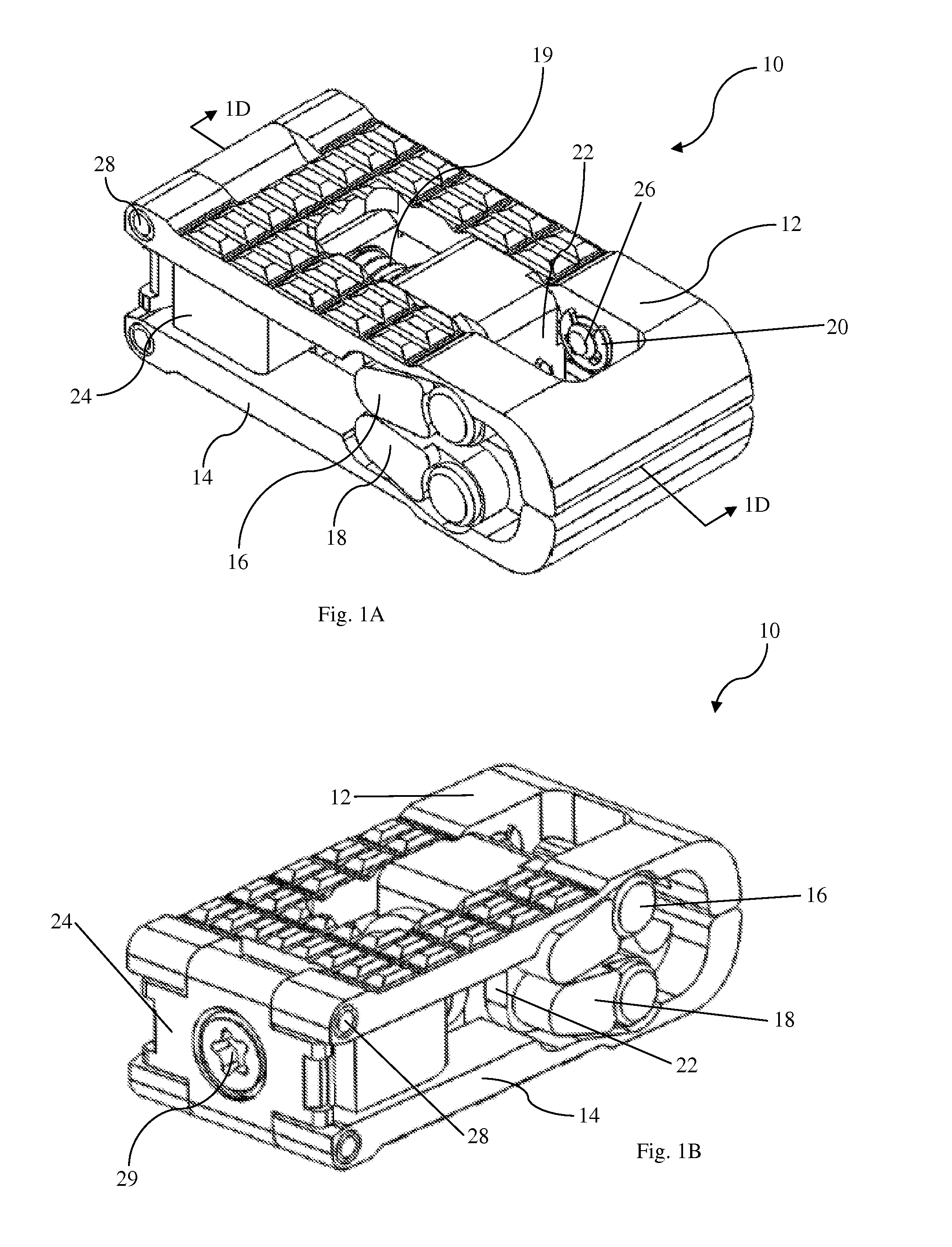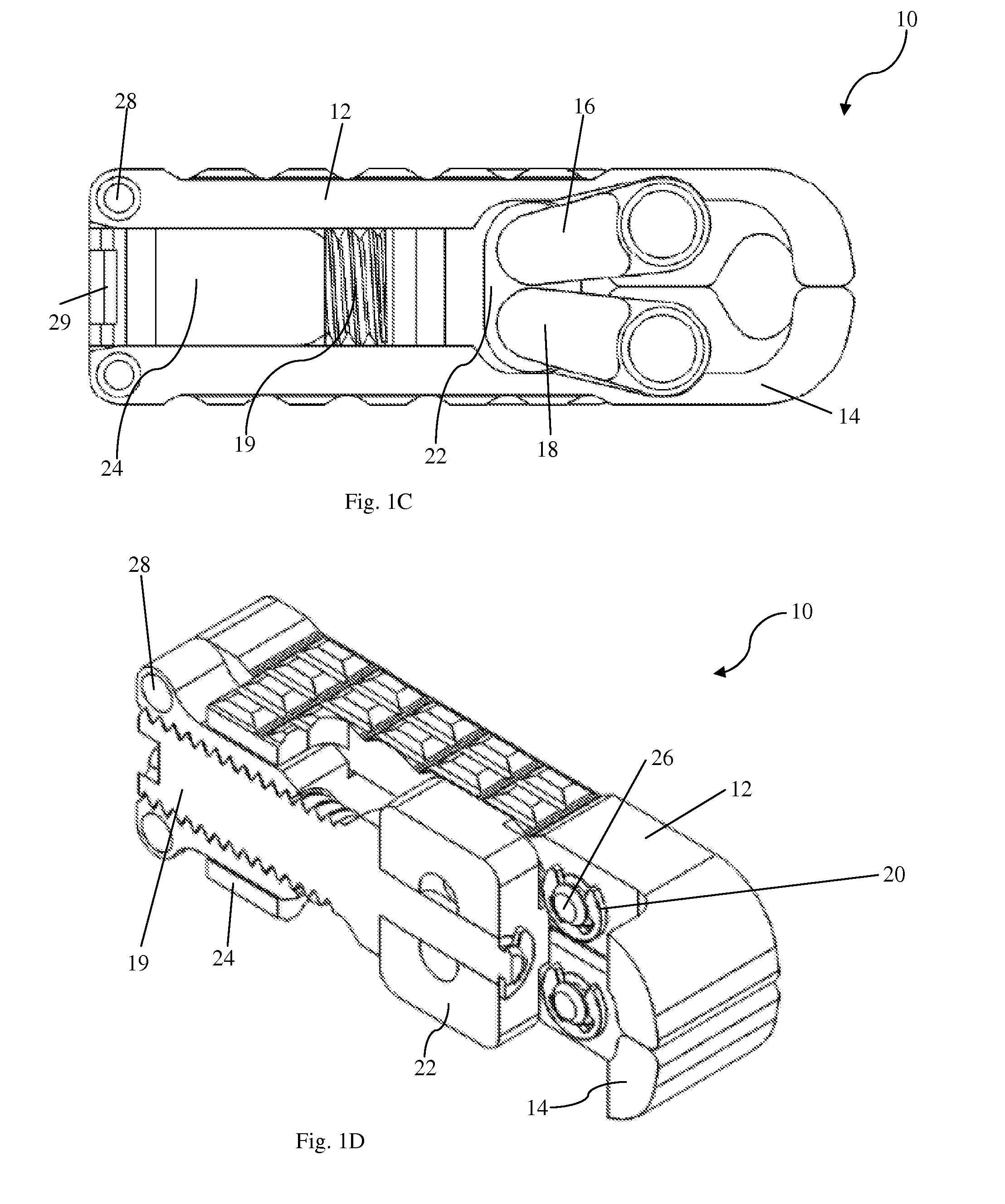Expandable intervertebral cage
a cage and vertebral technology, applied in the field of dissection and fusion of vertebrae, can solve the problems of high risk of nerve injury, rare technique practiced today, and destruction of a large portion of the disc spa
- Summary
- Abstract
- Description
- Claims
- Application Information
AI Technical Summary
Benefits of technology
Problems solved by technology
Method used
Image
Examples
Embodiment Construction
[0042]In the following detailed description of the present invention, numerous specific details are set forth in order to provide a thorough understanding of the present invention. However, one skilled in the art will recognize that the present invention may be practiced without these specific details. In other instances, well-known methods, procedures, and components have not been described in detail so as to not unnecessarily obscure aspects of the present invention. U.S. Pat. No. 8,628,577, invented by the inventor of the present application, discloses a stable intervertebral body fusion and distraction device. This patent is hereby incorporated herein by reference in its entirety other than the summary of the invention, claims and any express definitions set forth therein.
[0043]FIG. 1A is a perspective view of expandable intervertebral cage device 10, as seen from a distal end. FIG. 1B shows the same intervertebral cage device 10 from an opposite, proximal end. As shown in FIGS....
PUM
 Login to View More
Login to View More Abstract
Description
Claims
Application Information
 Login to View More
Login to View More - R&D
- Intellectual Property
- Life Sciences
- Materials
- Tech Scout
- Unparalleled Data Quality
- Higher Quality Content
- 60% Fewer Hallucinations
Browse by: Latest US Patents, China's latest patents, Technical Efficacy Thesaurus, Application Domain, Technology Topic, Popular Technical Reports.
© 2025 PatSnap. All rights reserved.Legal|Privacy policy|Modern Slavery Act Transparency Statement|Sitemap|About US| Contact US: help@patsnap.com



